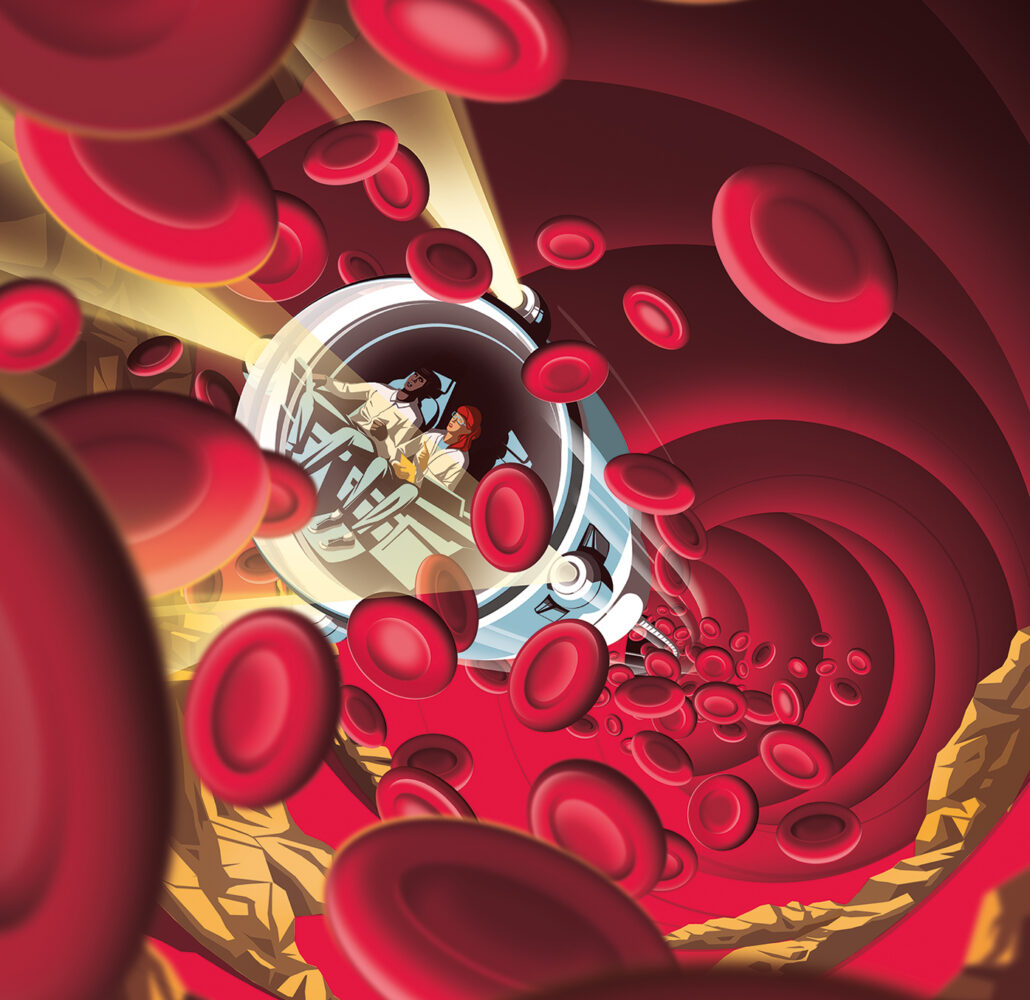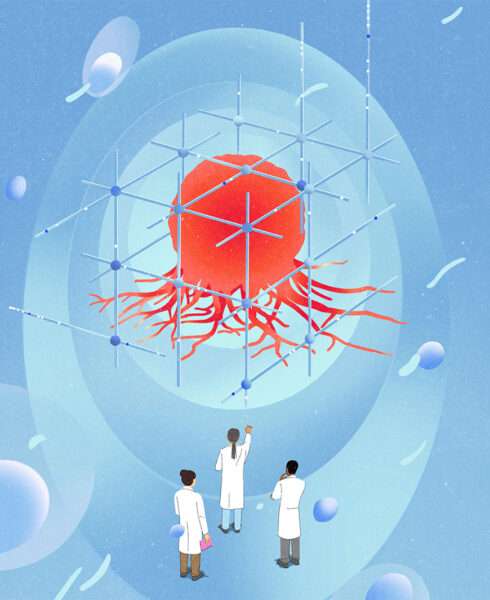Biomedical engineer Ali Tavallaei is designing and developing advanced image-guided devices to enable cardiovascular specialists to perform vascular procedures, such as angioplasty and abdominal aneurysm repair with even greater precision and higher success rates.
“Cardiovascular disease is the leading cause of death globally. More than 10 million catheter-based procedures are performed annually to diagnose and treat cardiovascular diseases, but up to 30 per cent of these interventions fail or have to go for repeats,” says Tavallaei, a Canada Research Chair in Systems and Devices for Cardiovascular Interventions, professor in the Department of Electrical, Computer and Biomedical Engineering at Ryerson University, and visiting scientist at Sunnybrook Research Institute.
Tavallaei launched Magellan Biomedical Inc., along with Sunnybrook Health Sciences Centre vascular surgeon Dr. Andrew Dueck and cardiovascular research scientist Graham Wright, to develop and commercialize inventions and technologies that would enhance image-guided therapy and improve patient outcomes. “In biomedical engineering, when you’re developing new technology, you need to think about how your technology will transfer to the clinic. It’s essential to have a multidisciplinary approach and get the perspectives of clinicians and industry partners from the outset,” explains Tavallaei.
His innovative Cath-Pilot system is designed to overcome two key limitations of existing cardiovascular catheter and guidewire systems, the main tools used in minimally invasive vascular procedures. Current catheter and guidewire devices use 2D X-ray projection imaging for visualization and don’t allow the cardiologist to accurately and reliably control the tip position of the catheter during the procedure.
His patented invention is an advanced steering, tracking and navigation system that addresses these challenges by providing 3D visualization of the device relative to the anatomy, and direct catheter control. “The system allows the user to achieve better steering, pushability, tracking and navigation of the catheter or guidewires for procedures such as coronary or peripheral angioplasty to open a blocked artery, aneurysm repair, or cardiac ablation [destroy abnormal tissue with an electrode] to correct heart rhythm problems,” he says.
A new generation of catheters
Tavallaei’s research team of 10 undergraduate, graduate and postdoctoral students have benefited from hands-on learning with industry collaborators to develop a full working prototype of the CathPilot and a prototype of Cath-Eye, an ultrasound imaging catheter that provides superior forward-looking rather than side-looking imaging to help guide vascular procedures. “We know the CathPilot technology works from preliminary testing. We’re optimizing the design and the next step is to take this to pre-clinical and then human studies. Our first clinical application will be for peripheral arterial angioplasty. Four million peripheral revascularization procedures are performed globally each year and the goal is to help reduce failure rates and procedure times,” he says.
In developing and commercializing these innovative cardiovascular devices, Tavallaei is drawing on the entrepreneurial experience and the success of his first company, Vital Biomedical Technologies. “We developed and globally distributed devices that help to improve the quality of MRI-focused ultrasound therapy and MRI-guided radiotherapy to institutions such as Stanford University, Oxford University and New York’s Memorial Sloan Kettering Cancer Center,” he says.
As a boy growing up in Iran, he loved math, geometry, and mechanical tinkering. “The best way to apply my skill set was biomedical engineering and to help in the clinical space. Now, I’m hoping my research at Ryerson can lead to a new generation of catheters that will have improved quality in steering and navigation, which will allow cardiovascular procedures to be more effective, reduce failure rates and lead to better outcomes for patients. What’s most exciting for me is that the potential applications are endless,” he says.





